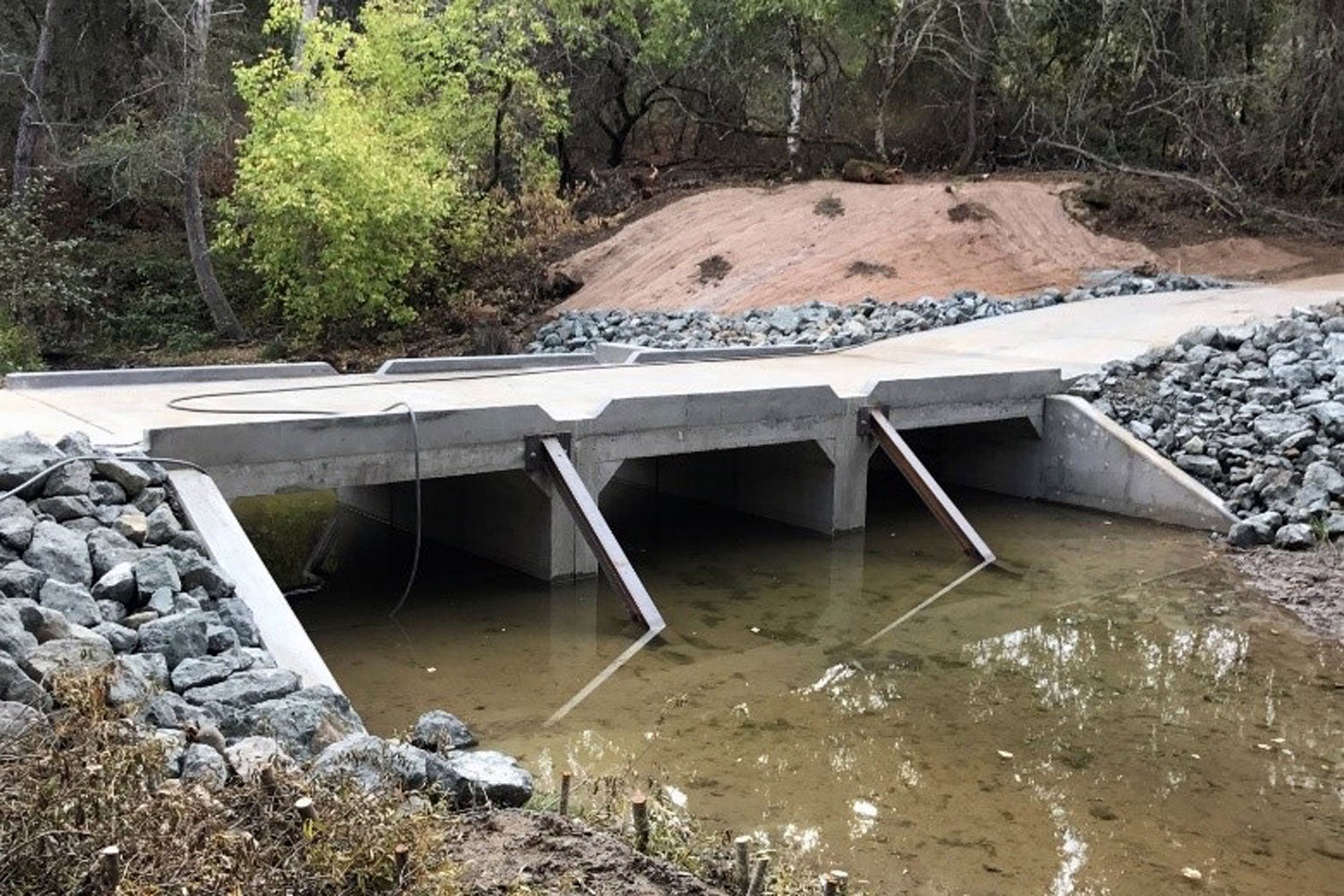Modifications enhance fish passage on San Francisquito Creek
Stanford officials have worked with regional and state agencies to modify a concrete roadway section and restore low-flow, uninterrupted fish passage.
Fish passage in nearby San Francisquito Creek has been enhanced, thanks to modifications Stanford made to a concrete roadway creek crossing in the Jasper Ridge Biological Preserve.

A creek crossing in Jasper Ridge Biological Preserve was modified to restore uninterrupted fish passage during low flows. (Image credit: Courtesy Land, Buildings & Real Estate)
The roadway is used by maintenance and emergency vehicles when officials need to access areas of the preserve, according to Tom Zigterman, director of water resources and civil infrastructure.
Stanford’s Jasper Ridge Biological Preserve is a 1,193-acre natural laboratory located in the eastern foothills of the Santa Cruz Mountains. The preserve’s ecosystem allows scientists worldwide to pursue research and teaching that contributes to the understanding of Earth’s natural systems. San Francisquito Creek, which separates San Mateo and Santa Clara counties, begins in the preserve and travels 14 miles to San Francisco Bay.
In the past during the rainy season, the creek’s flow inundated the crossing and provided passage for the fish above it. During low flows, however, the crossing interrupted fish passage.
“San Francisquito Creek and its tributaries are known to support a population of steelhead trout,” said Alan Launer, associate director for conservation planning in Land, Buildings and Real Estate. “The local form of this migratory species is the threatened Central California Coast steelhead, and much of the San Francisquito Creek watershed, including the site of this project, is designated as a critical habitat for this federally protected animal.”
Stanford worked with regional and state agencies to design a modification that would remove the solid concrete roadway section and replace it with a roadway supported by box culverts that restored low-flow, uninterrupted fish passage.
“This project is another demonstration of Stanford’s ongoing efforts to enhance fish passage and habitat in our creeks, while continuing the beneficial use of local surface water as an important sustainable water resource for the university,” said Zigterman.
